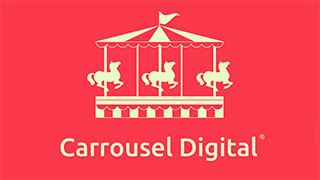Crown Commercial Services RM6116 framework provides access to network services for public sector organisations
Through Network Services 3, all public sector organisations are able to access network solutions, communication services, connectivity to cloud-based data and applications, audio and video conferencing, radio and satellite networking, and emerging technologies such as Internet of Things (IoT) and Smart Cities.
The framework runs from 23 May 2023 to 17 July 2025. There are 12 lots and 142 suppliers. The agreement will run for two years, with the option of extending for 12 months and then another 12 months.
There are several services available through the agreement, which include, but are not limited to: fibre optic cabling; 5G network; internet access; Internet Protocol (IP) Telephony which enables voice calls over the internet; cloud services; audio and video conferencing (collaboration solutions); satellite networking; maintenance and support services; contact centre services; security and surveillance; and professional services required to design, build (install) and deliver (manage) network solutions.
The framework also offers unified communications (application or platform that provides multiple communication methods including voice, video and data services); local area network (including products and services facilitating connectivity within the customers location); and core network infrastructure, including services and equipment needed for network access (both for traditional core network infrastructure needs, as well as public internet connectivity solutions).
As well as the services listed above, the framework also enables customers to buy from a range of “emerging technologies” including IoT (Internet of Things) and Smart Technologies (smart, shared and connected spaces); tactical radio products and services; critical domain services (the services needed to register, maintain and manage domain names); and communication platform as a service.
Customers are able to engage suppliers in developing fully integrated communication solutions, thanks to the range of products and services. This enables buyers to purchase managed solutions from a supplier as well as individual component parts.
The framework offers several benefits including that it provides a complete range of network services from network infrastructure to fully integrated communication suites, as mentioned above.
It also introduces emerging technologies that reflect changes in the marketplace and future consumption of network solutions.
The framework supports the government’s cloud-first initiatives which are aimed at enabling public internet connectivity solutions and migration off the Public Sector Network.
The agreement attracts solution providers, service integrators and managed service providers who can remove the complexity of design from the end-user, and design, build and deliver solutions that provide cost and network optimisation.
By providing a WAN/LAN RFQ template, the framework enables more “further competition” on public internet connectivity solutions and therefore provides customers with better value for money.
For commoditised procurements, the framework enables direct awards on all Lots.
It also enables cross-lot competitions where managed services span across more than one capability.
As with other CCS frameworks, some suppliers have provided a Carbon Reduction Plan which can be found on their supplier page.
Carbon reduction in procurement is crucial due to its environmental and economic impacts. By favouring low-carbon suppliers and sustainable practices, organisations can significantly decrease their carbon footprint. This not only aligns with global efforts to combat climate change but also with the UK’s own net zero goals - especially in the public sector. Embracing carbon-conscious procurement fosters innovation, and drives the development of cleaner technologies and supply chain practices.
Lots
As previously mentioned, there are 145 suppliers on the agreement, spread over 12 lots.
Lot 1a: Inter Site Connectivity (Wider Area Network) / Data Access Services provides access to connectivity services, enabling Site-to-Site or Site-to-cloud interconnectivity including: terrestrial, fibre, wireless and satellite solutions, 5G, 6G; data networking equipment; software defined WAN, Secure Access Service Edge (SASE); internet service providers and internet services and gateways; broadband routing and performance monitoring solutions; e-mail and website services as part of ISP service; and professional services (design, build and deliver network connectivity solutions).
Lot 1b: Commercial Radio Capabilities enables access to voice communication solution utilising ultra/very high frequency, mobile radio and two-way transceiver, point to point and/or point to multipoint, secure radio and support equipment including: design, survey, build, management, support and maintenance services; mobile radio and two-way transceiver; point to point and/or point to multipoint; and supply, installation and, maintenance.
Lot 1c: Tactical Radio Systems gives access to tactical radio communications systems, utilising line of sight, C, S and L band, ultra-high frequency and very high frequency, including personal, manpack and platform radio systems. This lot covers design, survey, build, management, support and maintenance services; supply of radio system assembly; supply of supporting ancillary equipment, including but not limited to cable assembly for interfacing to any proprietary interfaces (power, data and audio); system verification, acceptance, test and evaluation. This lot expires on 22 May 2025, before the end of the framework.
Lot 1d: Critical Domain Services also expires on 22 May 2025, before the end of the framework. It provides access to domain registry services to operate and manage Nationally Critical Public Sector Domains. The lot covers critical registry functions, as specified by ICANN (Internet Corporation for Assigned Names and Numbers); critical registry functions with enhanced resilience and availability; functions to support the full management and governance of a nationally critical public sector domain.
Lot 2a: Intra Site Connectivity (Local Area Network) / Local Connectivity Services provides access to single site connectivity services, including (but not limited to) local area networks (LAN) enabling interconnectivity.
This lot covers design, survey, build, management, support and maintenance services; wired and/or wireless solutions; local area network (LAN) equipment and/or cabling and/or storage area network (SAN) equipment; LAN power solution and managed equipment room; and local infrastructure audit and/or testing services (such as asset management tools).
Lot 3a: IoT and Smart Cities (Smart shared and connected spaces) enables access to solutions related to smart technologies and Internet of Things. This includes applications such as smart buildings, water and waste management, crime prevention, education, smart street lighting, air and noise pollution monitoring; design, survey, build, management, support and maintenance services; vendor-agnostic solution design; “Edge” sensor technologies, connectivity, data analytics platforms and visualisation applications; and all forms of WAN connectivity between sensors in the field and cloud-based or “on-premise” data management platforms. It also includes infrastructure monitoring, preventative maintenance, and break-fix activities; data security and 3rd party integration into overall solution designs; and image recognition applications, alarms and security monitoring, CCTV as a service.
For more information on Smart Cities, check out our Smart City Business magazine.
Lot 3b: Communication Platform as a service allows access to software and hardware integration services to allow your applications to be interfaced to the communications suite with APIs (Application Programming Interface). This covers the design, build, test and deployment delivery and management, as well as support and maintenance services. It also includes API development from communications suite to external omni-channel applications.
Lot 4a: Analogue Telephony, as the name suggests, provides access to analogue voice (previously known as traditional telephony). It connects analogue telephony equipment with the public switched telephone network, including voice connectivity, voice call packages, SIP (Session initiation protocol) trunks, DDI (Direct dialling in) number ranges. This lot includes: adaptor/convertor for internet protocol connection; voice call packages (including voice minutes, volume packages); direct dial in (DDI) ranges; and end user devices. It also covers the design, survey, build, management, support and maintenance services including transformation to IP telephony and equipment adaptation.
Lot 4b: Digital Communication Services (Unified Communications) provides access to digital communications services including: IP telephony, unified communications, collaborative software application including audio and video conferencing and business enablement application software; and IP telephony, unified communications, collaborative software application (including audio and video conferencing and business enablement application software). It also includes: Internet Protocol (IP) telephony services with the ability to make and receive multimedia messaging over an IP based network service; consistent user interface for voice, video and data services allowing the full integration of these services within a single user device; and audio and video conferencing capability within the UC suite based on collaborative applications.
Lot 4c: Contact Centre Solutions gives the buyer access to inbound and/or outbound contact centre management including automation and queuing to multiple answering points. This includes design, survey, build, test and deployment delivery and management, as well as support and maintenance services; supply/support of equipment, commodity and managed services; and omnichannel customer experience platforms.
Lot 4d: Inbound Telephony Services provides access to telephone numbers for inbound call delivery. It includes inbound call management services for contact centre functionality, and the ability to provide you with a non-geographic number; and deliver all calls to that number to your nominated location.
Finally, Lot 4e: Paging and Alerting, as the name suggests, gives access to paging and alerting services with the ability to provide and users receive, a tone, numeric or word based alert. It includes: design, survey, build, management, support and maintenance services; bureau services; and local and/or national and/or international coverage.
Buying
There is more than one way to buy from the agreement. Direct award is available on all lots and is suitable for straightforward, commoditised requirements. Supplier offers are shown in the government marketplace.
Further competition can be used when you require services or products from multiple lots. Further competition should be used when you need suppliers to develop proposals or solutions to meet your statement of requirements. Further competition can help to amend or refine a wider range of the template call-off terms and conditions and can give you more flexibility when defining your statement of requirements.
The framework also offers the opportunity to buy through Aggregation. This service brings together customers with similar requirements and leverages the volume to create greater commercial benefits for customers. The procurement process is managed by CCS from start to finish.
The framework is a one-stop shop for all network and communication requirements for the public sector. The agreement should help public sector buyers to simplify their procurement and therefore save time and money.
For more information, visit the framework webpage.





